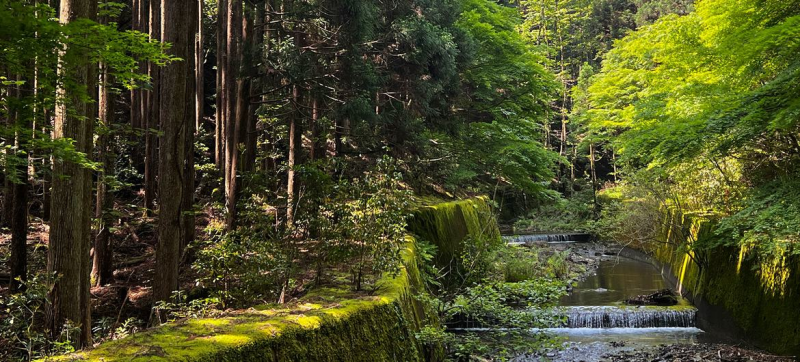- Dhaka’s air recorded unhealthy on Friday morning |
- Teesta activists announce ‘Silent Rangpur’ campaign in 5 districts |
- Ceasefire Offers Lifeline, but Gaza Hospitals in Ruins |
- Christensen calls next election most consequential in decades |
- OIC Condemns Knesset’s Annexation Law, Supports ICJ Advisory Opinion |
Decade of Slower Deforestation Brings Hope for Global Forests

A stream passes through a forest in the Kansai region of Japan.
Lush, green, and rich with trees and wildlife, forests are the Earth’s lungs and a vital source of livelihoods for millions of people.
Nearly 500 million hectares — equivalent to around 750 million football pitches — have been lost since 1990. However, the rate of deforestation has slowed in every region over the past decade, according to the UN Food and Agriculture Organization (FAO).
Deforestation refers to the loss of forest cover or its conversion to other uses, such as urban development or wasteland.
Each year over the past decade, the world has been losing around 10.9 million hectares of forest — an improvement from the 13.6 million hectares lost annually in the previous decade, and 17.6 million before that.
Tracking forest health
The encouraging trend was revealed on Tuesday in the FAO’s latest Global Forest Assessment Report, published every five years.
The report provides a comprehensive analysis of global and regional forest trends using remote sensing — an advanced process involving satellite imagery — alongside data submitted by countries.
Through international climate agreements such as the Paris Agreement, the United Nations promotes a collective approach to environmental protection. Assessments like FAO’s report help monitor whether countries are meeting their commitments under UN treaties and frameworks.
Qu Dongyu, FAO’s Director-General, said that the data produced through these assessments serves multiple purposes — “from informing the global community about the state of forests and their changes, to supporting decisions, policies, and investments related to forests and the ecosystem services they provide.”
Protecting and managing forests
According to the assessment, one-fifth of the world’s forests are now legally designated as protected areas — an increase of 251 million hectares since 1990. Asia leads all regions, with 26 per cent of its forest area under protection.
Beyond legal protection, more than half of all forests worldwide are managed. This means the land is used for purposes such as producing timber, fibre, and bioenergy, protecting soil and water, conserving biodiversity, or promoting tourism. In Europe, a remarkable 94 per cent of forests are managed.
Ownership varies globally. As of 2020, 71 per cent of the world’s forests remain publicly owned. In North and Central America, Indigenous Peoples and local communities collectively own about 41.6 million hectares.
Threats from fire, insects, and disease
The FAO previously linked the increasing risks of wildfires and pest outbreaks to climate change.
Fire remains a serious threat, affecting an average of 261 million hectares of land each year — nearly half of which is forested. In 2020 alone, another 41 million hectares were damaged by insects, diseases, and severe weather events.
To strengthen global conservation efforts, a special Forest Pavilion will promote biodiversity preservation and sustainable forest management during next month’s COP30 UN Climate Conference in Brazil.

